Our eyes are very sensitive. They are susceptible to various infections and pathologies. Redness in the corners of the eyes should alert you, especially if it is accompanied by various uncomfortable sensations: itching, pain, lacrimation, discharge. Such signs are a reason to consult a doctor to identify the causes of the disorder, which can be very diverse.

Why is there a problem?
The causes of redness in the corner of the eye are divided into several categories:
- Mechanical. The disorder occurs under the influence of various irritating factors: dust, aerosol, smoke, strong wind or too bright light, prolonged eye strain, injury, foreign body entry.
- Physiological. This category includes dilatation of the eye vessels, while the functioning of the organ is not disrupted. Provoking factors may include extreme fatigue, drinking alcohol, sneezing, excessive exercise, or irritation from wearing incorrectly fitted contact lenses or glasses.
- Pathological. These include eye diseases, which can be inflammatory or non-inflammatory. This also includes diseases of other organs that lead to the development of disorders, for example, diabetes mellitus, poison intoxication, hypertension, etc.

If the outer corner of the eye is red
External manifestations in this case resemble the consequences of mechanical impact. In addition, the disorder may be accompanied by peeling of the skin, pain and discomfort. Redness in the corners of the eyes on the outside is less common than on the inside. The skin of the eyelid usually turns red. The cause of the problem may be an allergy to cosmetics, as well as various pathologies.
Most often, a violation occurs as a result of:
- Angular conjunctivitis affecting the corners of the eyes. The pathology may be allergic or bacterial in nature. Additionally, other symptoms occur: a feeling of dryness, a foreign object in the eye, lacrimation, purulent discharge. The skin may be covered with minor cracks, and the pain intensifies when blinking.
- Ocular herpes. The patient suffers from pain, fear of light, and the eyelids swell.
- Regional blepharitis. The disease is accompanied by swelling of the upper eyelid, burning and itching, and the formation of crusts.
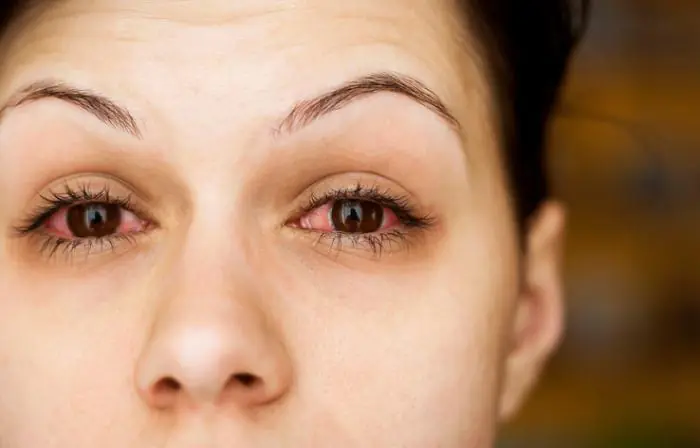
Why does the inner corner of the eye turn red?
The cause of this unpleasant phenomenon can be, in addition to the above, many other diseases.
Redness in the corners of the eyes on the inside occurs as a result of:
- Problems with or inflammation of the tear duct. In this case, the eyelids become very red, and the patient suffers from significant discomfort in the corners of the eyes. Obstruction of the lacrimal duct also manifests itself with similar symptoms, but this condition is also accompanied by severe lacrimation.
- Dacryocystitis. With this pathology, the lacrimal sac becomes inflamed. In addition to redness of the outer corner of the eye, there is a discharge of pus, and the skin swells.
- Ingrown hairs. If an eyelash hair grows under the skin, redness and pain appear. It is not possible to solve the problem on your own you need the help of a specialist.
A child has a problem
Children's eyes are highly sensitive. Redness occurs suddenly, most often for physiological reasons, such as:
- excessive stress
- crying or sneezing
- dust ingress
- colds.
Redness in the corners of a baby's eyes can be caused by a blocked tear duct. The formation of a septum between the tear ducts and the nasal cavity occurs in the eighth month of pregnancy. When a baby is born, it ruptures, but this may not happen, which will lead to the accumulation of excess fluid inside the tear duct. This disorder is called neonatal dacryocystitis.

Allergic diseases or decreased immunity can cause problems. As a result of such pathologies, conjunctivitis or blepharitis develops, and sometimes uveitis (inflammation of the vascular membranes of the eye) - a serious disease that can cause blindness.
If the problem does not go away within three days, the symptoms intensify, pus appears, the baby complains of pain and cramps, you need to show him to the pediatrician. If necessary, he will recommend visiting an ophthalmologist. If you have double vision or blurred vision, you should immediately contact a medical facility.
Non-pathological causes of redness in the corner of the eye in an adult
In addition to diseases, an unpleasant problem can be caused by an incorrect lifestyle. Modern people cannot imagine themselves without computers we often sit at them until the very night, straining our eyes. As a result, it is possible to develop dry eye syndrome or computer vision syndrome, which cause redness and burning of the corner of the eye, pain and other unpleasant manifestations, for example, intolerance to sunlight.

Associated symptoms of the disorder
The appearance of additional signs will depend on what exactly caused the redness. But there are general symptoms that accompany the pathological process in any form:
- presence of redness
- lacrimation
- photosensitivity
- visual impairment
- soreness and discomfort.
However, there may also be specific manifestations characteristic of a particular pathology, such as:
- discharge of pus
- formation of crusts and sticking of eyelashes
- headache
- increased body temperature
- spots or spots before the eyes
- pain in the corner of the eye
- pain when moving the eyes
- swelling of the eyelids
- sensation of itching and burning.
First aid at home
First of all, it is necessary to eliminate the possible causes of the violation:
- reduce tension
- remove foreign body
- rinse your eyes.
If the inner corner of the eye is red, a compress with cool water or decoctions of medicinal plants will help. You can apply a tea bag to the affected area. It is possible to use eye drops with a moisturizing effect or vasoconstrictor medications.
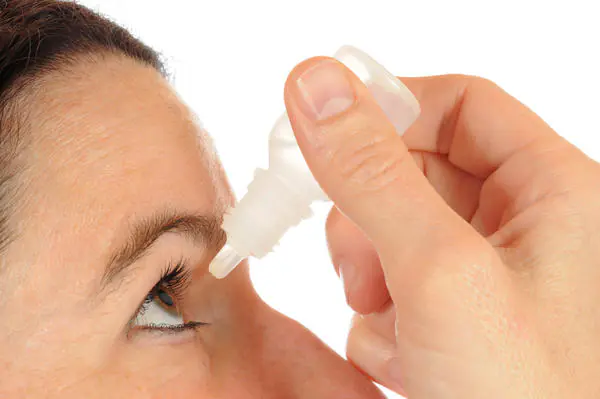
If redness of the outer corner of the eye is detected, the use of warm compresses, cleansing of pus, the use of antibacterial and antiviral agents, immunomodulators are effective, but only after consulting a specialist.
Diagnostic measures
After the appearance of a symptom, you should definitely visit a doctor to establish the exact cause and choose the right treatment tactics, since many pathologies manifest themselves with similar symptoms it will not be possible to distinguish them on your own at home.
The ophthalmologist will examine and interview the patient to find out:
- duration and nature of symptoms, intensity of manifestations
- the patient has chronic ophthalmological diseases, infectious pathologies, allergies.
The specialist will also ask what the patient did before visiting the doctor, whether he uses contact lenses or glasses.
The examination is carried out using the lateral illumination method, with which it is easy to detect redness of the skin of the eyelids, examine the conjunctiva, eyeballs, and sclera.
If necessary, the doctor will refer you to:
Treatment methods
Treatment will depend on what caused the disorder. The problem is often resolved by:
- non-steroidal anti-inflammatory drugs
- antibiotics for topical use
- painkillers if necessary
- antihistamines.
Ointments are most often applied at night. Doctors do not recommend using bandages, as this can lead to infection.
Among folk remedies, it is recommended to use warm lotions from decoctions:
To treat a small child, it is better to use chamomile decoction, which has almost no contraindications. The product is used to wash the eyes, which relieves irritation and prevents the development of pathogenic microorganisms. For older children, a mint decoction is suitable, from which medicinal compresses are made before bed.
Additionally, the doctor may recommend visiting physiotherapeutic procedures, such as:
If the cause of the disorder was a serious injury, surgery may be necessary, after which medication will also be prescribed.
Preventive actions
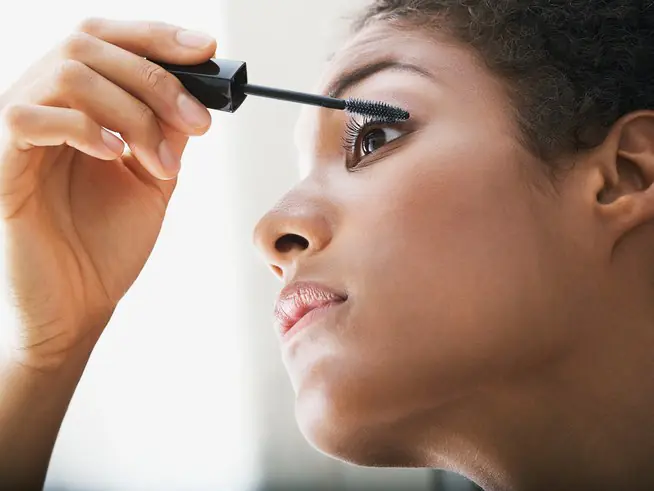
To protect yourself from redness in the corners of your eyes in the future, you must:
- Adhere to hygiene rules. Wash off cosmetics before going to bed. Don't forget to wash your hands regularly.
- Take breaks when working at the computer, warm up your eyes.
- Treat all diseases in a timely manner, and it is better to prevent their occurrence.
- Protect the organs of vision from injury and damage.
- Take care of the prevention of eye diseases.
- Use contact lenses correctly.
If you notice redness in the corners of your eyes, do not self-medicate. Many diseases have similar manifestations, and only a doctor can make the correct diagnosis. Therefore, if you have a problem, consult an ophthalmologist.
The human eye is a very complex organ in its structure. Due to the fact that the skin around the eyelids is the thinnest and most sensitive, it is susceptible to the manifestations of many diseases that, without proper treatment, can cause serious discomfort.
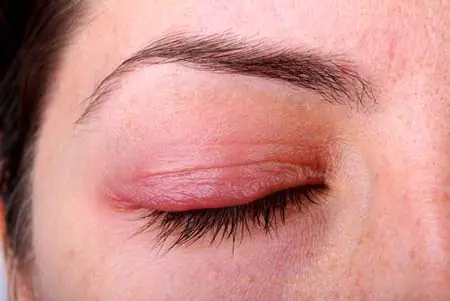
First of all, you should remember that the skin around the eyelids is very delicate and therefore requires special care.
- Daily makeup should be removed with special gentle products that gently remove a layer of cosmetics, while caring for even the most sensitive skin.
- You should not wash your face with regular soap too often, as it dries out the skin greatly and can also cause dryness, flaking, and subsequently itching.
- If irritation appears in the corners of the eyes, you should not rub your eyes with your hands, since it is with your hands that you can transfer dangerous microbes to the mucous membrane.
Symptoms of various diseases
Demodicosis is a disease that occurs quite often. It is a parasitic pathology, the causative agent of which is considered to be the iron mite.
Most often, this type of disease occurs in older and elderly people. It is extremely rare in children.
- redness of the skin around the eyelid
- dryness, peeling of the skin
- rashes in the form of a cluster of blisters or of an inflammatory nature.
Allergies are another type of disease that often causes serious harm to the skin. When an allergic reaction occurs, symptoms such as:
- redness of the skin around and in the corners of the eyes
- peeling of the skin
- increased lacrimation
- itching and burning.
Hyperthyroidism is a serious disorder of the human endocrine system associated with excessive production of the hormones triiodothyronine and thyroxine. The main symptoms of this disease and differences from other diseases are the following:
- emotional tension (fear, nervousness, trembling hands)
- persistent, difficult to treat sinus tachycardia
- limited mobility of the eyeball with possible protrusion forward
- dry skin around the eyelids, frequent pain in the eyes, corneal erosion (there is a high probability of partial or complete loss of vision)
- frequent shortness of breath.
Symptoms of hyperthyroidism are eye irritation, dryness. They are quite pronounced and require urgent consultation with a doctor.
Main causes of irritation
Irritation under the eyes is a fairly common symptom that affects many people. There are many reasons for the appearance of irritation, let’s highlight the main ones.
- Allergic reaction.
- Dermatitis.
- Infectious diseases.
- Negative environmental impact.
- Improper skin care.
- Vitamin deficiency, dysbiosis or malfunction of the gastrointestinal tract.

Reddened and inflamed eyelid skin requires immediate treatment, as such irritation can cause quite serious discomfort.
Treatment methods for the problem
First of all, you need to consult with a specialist to determine the true cause of irritation. To do this, you need to seek advice from doctors such as an allergist, dermatologist, endocrinologist, or therapist.
After identifying the cause of irritation on the eyelids, treatment will be selected by a specialist, which will bring the best and fastest results.
Sometimes for treatment it is enough to take a course of antiallergic drugs or simply use drops for eye irritation. But sometimes itching and flaking are caused by serious disorders of the internal system of human organs, which require serious treatment.
You should never neglect such signals from our body, because they often help to quickly determine the type of disease, as well as choose the right treatment.
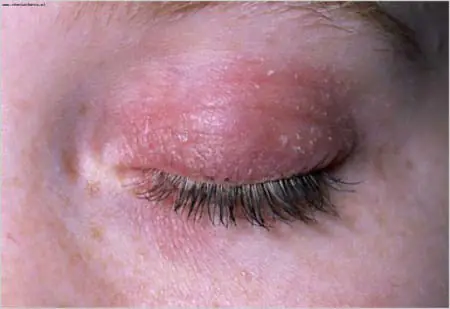
Below is a list of the most commonly prescribed medications when a patient presents with the above symptoms.
| Name | Description | Price |
| Bepanthen cream | Promotes active moisturizing and restoration of dry and damaged skin. | From 600 rub. |
| Cetirizine | Antiallergic drug, take 1 tablet 1 time per day. Allows you to quickly cope with an allergic reaction expressed in redness and itching in the eyelid area. | From 110 rub. |
| Loriden | Antihistamine in the form of an ointment. Relieves symptoms of itching and irritation in 30–60 minutes, effective for 24 hours. | From 330 rub. |
Help from traditional medicine
If the irritation is caused by negative environmental influences or is a consequence of the influence of household factors, you can fight the redness of the eyelids yourself using traditional medicine recipes.
There are several ways to relieve irritation we will name the most effective of them.
A very effective way to combat fatigue, redness and irritation under the eyes are ice cubes with frozen infusions of medicinal herbs, which can always be found at your nearest pharmacy. Chamomile most effectively combats unpleasant symptoms.
For the compress you need:
- disposable bag of chamomile flowers
- boiled water.
- Brew chamomile tea and fill an ice tray with the infusion.
- We take out an ice cube, wrap it in a disposable napkin, and apply it to the inflamed area of skin.
In the summer, when fresh vegetables are on store shelves, you can use them as natural cosmetics. Cucumbers perfectly soften and soothe the skin of the eyelids.
For the compress you need:
- Place fresh cucumber in cold water for a few minutes.
- Then cut a couple of circles and apply them to your eyes.

The eyes are the mirror of the soul, or more precisely, of our body. At the first signs of irritation of the skin around the eyes, dryness, itching or redness of the eyelids, you should pay very close attention to this signal, as it may indicate serious health problems.
Whatever the cause of the above symptoms, they must be eliminated as quickly as possible.
Consulting a professional doctor will always help determine the cause and choose the right treatment. Human beauty begins from within, a beautiful look means a healthy body!
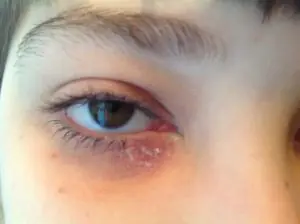
Under the influence of negative environmental factors, as well as the internal state of the body, the corners of patients' eyes may begin to turn red, dry and crack.
This condition is fraught with complications for the organs of vision.
Therefore, it is recommended to promptly identify and eliminate the cause through the use of medications and folk remedies. An ophthalmologist can help with this.
Causes
The following reasons exist for the formation of pathological symptoms:
- the use of low-quality cosmetics, in some cases they may be expired, resulting in severe redness and damage to the skin
- allergic reactions in the eyes, accompanied by excessive dryness of the corners of the eyelids (plant flowering, animal hair, dust, food products)
- insufficient intake of nutrients, vitamins, microelements and minerals from food, which forms hypovitaminosis
- the use of certain medications to which the patient may develop hypersensitivity
- rubbing and scratching the skin on the eyelids, which leads to mechanical damage and inflammation of the corners of the eyes
- autoimmune reactions of the body, that is, cells of the human immune system attack their own tissues (rheumatoid arthritis, systemic lupus erythematosus)
- dermatological diseases (dermatitis, rosacea)
- inflammatory conditions of the eyelids that develop in humans over a long period of time (blepharitis, meibomitis, chalazion)
- viral eye infection
- bacterial proliferation leading to purulent infection.
Each of these conditions is characterized not only by inflammation and cracked skin in the corners of the eyes, but also by other clinical symptoms, by which the true cause can be identified.
Treatment
For each individual pathology that appears, there is a specific treatment. Most often doctors prescribe the following medications:
- antibacterial drops (Tobrex, Vigamox)
- antibacterial ointments (Erythromycin, Tetracycline, Levomekol)
- antiviral drops (Poludan)
- antiviral ointments (Floreal, Bonafton)
- systemic antiviral drugs (Acyclovir, Arbidol)
- non-steroidal anti-inflammatory drops and ointments based on diclofenac
- non-steroidal anti-inflammatory drops and ointments based on hormonal substances, for example, dexamethasone
- wound healing ointments (Solcoseryl)
- multivitamin drops in the eyes to improve metabolism and general tissue condition
- multivitamin preparations for oral administration (Aevit, Alphabet, Blueberry Forte).
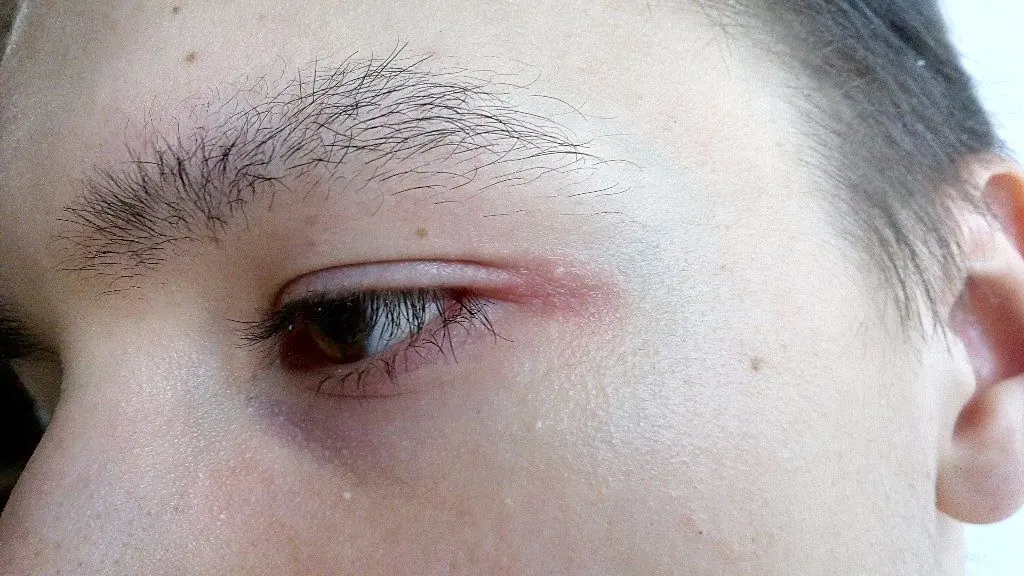
Antibiotics and steroids must be used for a short course of treatment to avoid side effects. All other drugs can be used with prolonged action, the body will not become addicted.
Prevention
To prevent dry eyelid skin, redness and inflammation, it is recommended to use the following preventive measures:
- periodic visits to doctors of narrow specialties for a general examination and laboratory tests
- proper eyelid skin care, use of moisturizing ointments
- no use of expired cosmetics it is necessary to monitor the quality of each product used
- maintaining good hygiene, especially with regard to the use of contact lenses
- eating food containing all the vitamins and nutrients if this is not enough, use multivitamin courses for prevention
- timely treatment of all systemic diseases.
With strict adherence to all methods of prevention, it is not always possible to prevent ophthalmological disease. But the risk of their occurrence will be significantly reduced.
Useful video



